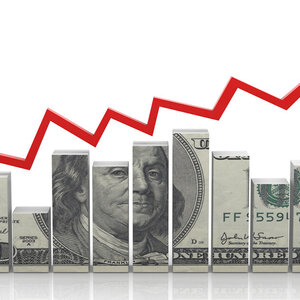The WPJ
THE WORLD PROPERTY JOURNALReal Estate Facts Not Fiction
Residential Real Estate News

U.S. Foreclosures Dip in Q2, Delinquencies at Six-Year Lows
Residential News » North America Residential News Edition | By Michael Gerrity | August 7, 2014 10:30 AM ET
According to the Mortgage Bankers Association's (MBA) National Delinquency Survey, U.S. delinquency rates for mortgage loans on one-to-four-unit residential properties decreased to a seasonally adjusted rate of 6.04 percent of all loans outstanding at the end of the second quarter of 2014. The delinquency rate decreased for the fifth consecutive quarter and reached the lowest level since the fourth quarter of 2007. The delinquency rate decreased seven basis points from the previous quarter, and 92 basis points from one year ago.
The delinquency rate includes loans that are at least one payment past due but does not include loans in the process of foreclosure. The percentage of loans in the foreclosure process at the end of the second quarter was 2.49 percent, down 16 basis points from the first quarter and 84 basis points lower than one year ago. This was the lowest foreclosure inventory rate seen since the first quarter of 2008.
The percentage of loans on which foreclosure actions were started during the second quarter fell to 0.40 percent from 0.45 percent, a decrease of five basis points, and reached the lowest level since the second quarter of 2006.
The serious delinquency rate, the percentage of loans that are 90 days or more past due or in the process of foreclosure, was 4.80 percent, a decrease of 24 basis points from last quarter, and a decrease of 108 basis points from the second quarter of last year. Similar to the previous quarter, 75 percent of seriously delinquent loans were originated in 2007 and earlier. Loans with vintages started in 2011 and later only accounted for six percent of all seriously delinquent loans.
"Delinquency and foreclosure rates fell to their lowest levels in more than six years, and the rate of new foreclosure starts is at its lowest level since 2006," said Mike Fratantoni, MBA's Chief Economist. "Strong job growth and continued increases in home prices in most markets have been the main contributors to these steady improvements in mortgage performance.
"We have returned to more typical seasonal patterns with respect to mortgage delinquency, with 30-day and 60-day delinquency rates increasing from the first to the second quarter on an unadjusted basis. Adjusting for the seasonal pattern, we estimate that delinquencies were down for the quarter, and are down almost a full percentage point from last year.
"Nationally, the seriously delinquent rate fell by 24 basis points last quarter and has dropped 108 basis points over the past year. The loans that are seriously delinquent, either 90+ days late or in the foreclosure process, were primarily made prior to the downturn, with 75 percent of them originated in 2007 or earlier. Loans made in recent years continue to perform extremely well due to the improving market and tight credit conditions.
"A new trend that has emerged is growth in the number of prime ARM loans serviced. Many of these are recently originated jumbo loans that are kept on banks' balance sheets. However a majority of outstanding prime ARM loans were originated in 2007 and earlier and these loan vintages accounted for over 90 percent of seriously delinquent prime ARM loans. These older cohorts are keeping the seriously delinquent numbers elevated despite the inflow of newer loans with stronger credit quality."
"The declining trend in later stage delinquencies and foreclosure measures is clearly continuing at the national level," added Joel Kan, MBA's Director of Economic Forecasting. "Some states hardest hit by the crisis, for example California and Arizona, now have foreclosure inventory rates that are both back to pre-crisis levels and less than half the current national rate. On the other hand, despite declines last quarter, states with slower-moving judicial foreclosure regimes, like New Jersey, Florida and New York, have foreclosure inventory rates two to three times the national average. There were 18 states with a higher foreclosure inventory rate than the national average, and 15 of those were judicial states. Judicial states are also starting to see more foreclosure starts than non-judicial states, whereas there used to be no clear tendency for either foreclosure regime in the past quarters.
"Policymakers continue to closely watch the performance of FHA loans. Our data shows that the seriously delinquent rate for FHA declined 43 basis points over the quarter and 135 basis points relative to last year, indicating continued improvement. The seriously delinquent rate for FHA loans was the lowest since 2008 but still above the long run average of around four percent. The FHA foreclosure starts rate declined nine basis points to 0.55 percent and was at the lowest level since 2000, as well as below the long run average of 0.6 percent."
Change from last quarter (First Quarter of 2014)
On a seasonally adjusted basis, the overall delinquency rate decreased seven basis points for all loan types to 6.04 percent. The seasonally adjusted delinquency rate decreased nine basis points to 3.20 percent for prime fixed loans and increased 20 basis points to 5.28 percent for prime ARM loans. For subprime loans, the delinquency rate decreased 14 basis points to 18.66 percent for subprime fixed loans and decreased 142 basis points to 20.20 percent for subprime ARM loans. The FHA delinquency rate fell by 15 basis points to 9.67 percent and VA delinquency rate fell by 16 basis points to 5.25 percent.
The non-seasonally adjusted percentage of loans in foreclosure, also known as the foreclosure inventory rate, decreased from last quarter to 2.49 percent. The foreclosure inventory rate for prime fixed loans decreased nine basis points to 1.37 percent and the rate for prime ARM loans decreased 27 basis points from last quarter to 3.26 percent. For subprime loans, the rate for subprime fixed loans increased 29 basis points to 8.36 percent and the rate for subprime ARM loans decreased 170 basis points to 13.38 percent. The foreclosure inventory rate for FHA loans decreased 19 basis points to 2.81 while the rate for VA loans decreased 12 basis points to 1.56 percent.
The non-seasonally adjusted foreclosure starts rate decreased three basis points for prime fixed loans to 0.23 percent and decreased five basis points for prime ARM loans to 0.43 percent. For subprime fixed loans, the foreclosure starts rate decreased eight basis points to 1.09 percent and increased 29 basis points for subprime ARM loans to 1.87 percent. For FHA loans, the unadjusted foreclosure starts rates decreased by nine basis points to 0.55 percent while the foreclosure starts rate also decreased by nine basis points for VA loans to 0.30 percent.
Change from last year (Second Quarter of 2013)
Given the challenges in interpreting the true seasonal effects in these data when comparing quarter to quarter changes, it is important to highlight the year-over-year changes of the non-seasonally adjusted results.
Compared with the second quarter of 2013, the foreclosure inventory rate decreased 50 basis points for prime fixed loans, decreased 219 basis points for prime ARM loans, decreased 153 basis points for subprime fixed, decreased 422 basis points for subprime ARM loans, decreased 87 basis points for FHA loans, and decreased 32 basis points for VA loans.
Over the past year, the non-seasonally adjusted foreclosure starts rate decreased 10 basis points for prime fixed loans, decreased 38 basis points for prime ARM loans, decreased 89 basis points for subprime fixed, decreased 138 basis points for subprime ARM loans, decreased 26 basis points for FHA loans, and decreased 17 basis points for VA loans.
Sign Up Free | The WPJ Weekly Newsletter
Relevant real estate news.
Actionable market intelligence.
Right to your inbox every week.
Real Estate Listings Showcase
Related News Stories
Residential Real Estate Headlines
- More Americans Opting for Renting Over Homeownership in 2024
- BLOCKTITLE Global Property Tokenization Platform Announced
- Small Investors Quietly Reshaping the U.S. Housing Market in Late 2024
- Greater Miami Overall Residential Sales Dip 9 Percent in November
- U.S. Home Sales Enjoy Largest Annual Increase in 3 Years Post Presidential Election
- U.S. Housing Industry Reacts to the Federal Reserve's Late 2024 Rate Cut
- U.S. Home Builders Express Optimism for 2025
- Older Americans More Likely to Buy Disaster-Prone Homes
- NAR's 10 Top U.S. Housing Markets for 2025 Revealed
- U.S. Mortgage Delinquencies Continue to Rise in September
- U.S. Mortgage Rates Tick Down in Early December
- Post Trump Election, U.S. Homebuyer Sentiment Hits 3-Year High in November
- Global Listings Aims to Become the Future 'Amazon of Real Estate' Shopping Platform
- Greater Las Vegas Home Sales Jump 15 Percent in November
- Ultra Luxury Home Sales Globally Experience Slowdown in Q3
- World Property Exchange Announces Development Plan
- Hong Kong Housing Market to Reach Equilibrium in Late 2025
- Construction Job Openings in U.S. Down 40 Percent Annually in October
- U.S. Mortgage Applications Increase in Late October
- World Property Markets, World Property Media to Commence Industry Joint-Venture Funding Rounds in 2025
- New Home Sales Hit 2 Year Low in America
- U.S. Pending Home Sales Increase for Third Consecutive Month in October
- Pandemic-led Residential Rent Boom is Now Fizzling in the U.S.
- Emerging Global Real Estate Streamer WPC TV Expands Video Programming Lineup
- 1 in 5 Renters in America Entire Paycheck Used to Pay Monthly Rent in 2024
- U.S. Home Sales Jump 3.4 Percent in October
- Home Buyers Negotiation Power Grows Amid Cooling U.S. Market
- Canadian Home Sales Surge in October, Reaching a Two-Year High
- Greater Orlando Area Home Sales Continue to Slide in October
- U.S. Mortgage Credit Availability Increased in October
- U.S. Mortgage Rates Remain Stubbornly High Post Election, Rate Cuts
- Construction Input Prices Continue to Rise in October
- BETTER MLS: A New Agent and Broker Owned National Listings Platform Announced
- Home Prices Rise in 87 Percent of U.S. Metros in Q3
- Caribbean Islands Enjoying a New Era of Luxury Property Developments
- The World's First 'Global Listings Service' Announced
- Agent Commission Rates Continue to Slip Post NAR Settlement
- Market Share of First Time Home Buyers Hit Historic Low in U.S.
- Greater Palm Beach Area Residential Sales Drop 20 Percent Annually in September
- Mortgage Applications in U.S. Dip in Late October
Reader Poll
Marketplace Links
This website uses cookies to improve user experience. By using our website you consent in accordance with our Cookie Policy. Read More





